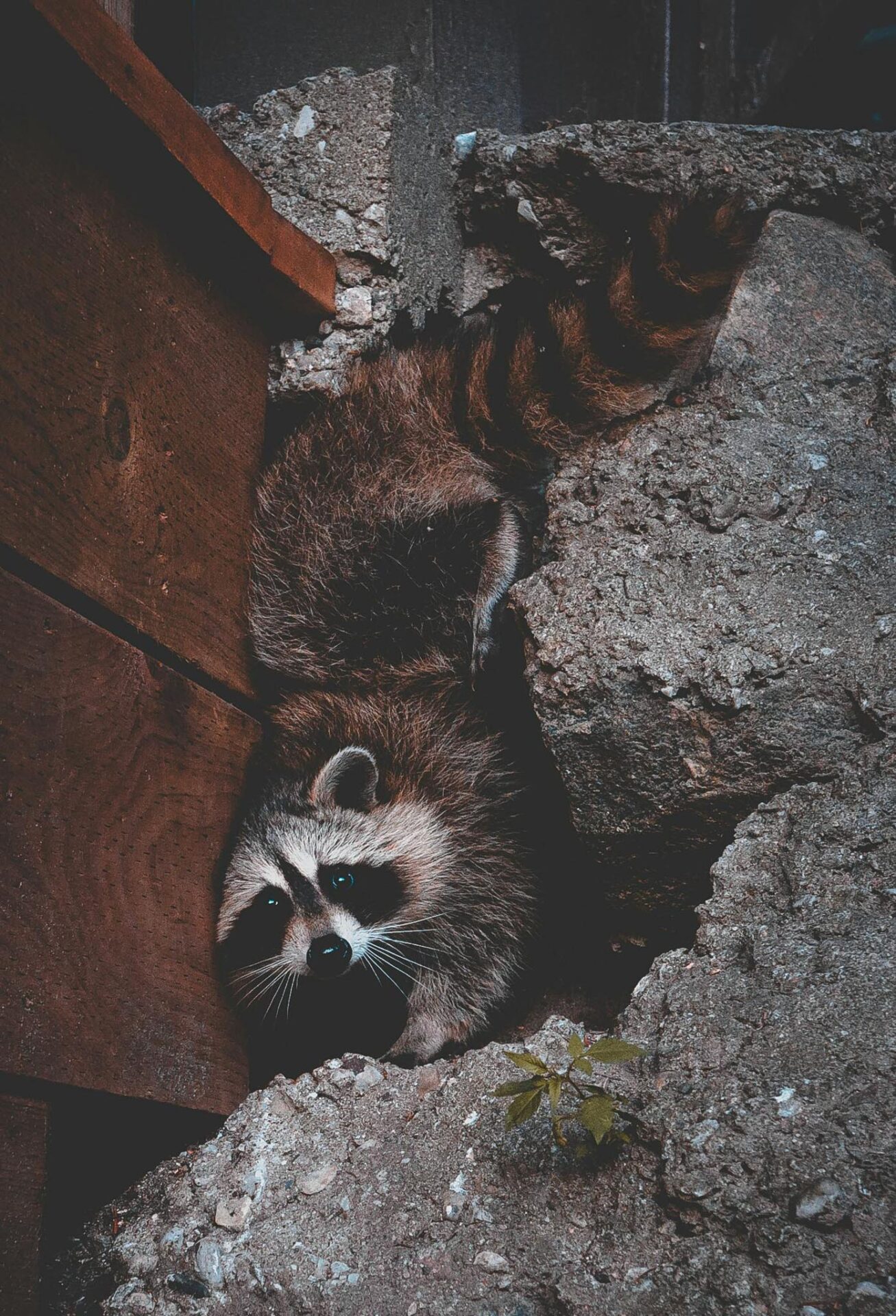Raccoon
Introduction
The raccoon (Procyon lotor) is one of the most adaptable mammals in North America, thriving in both wild and urban environments across Missouri, the Midwest, and the United States. Known for their distinctive black facial “mask” and ringed tail, raccoons are intelligent, curious, and opportunistic, making them both fascinating and challenging when they move into residential areas.
Biology

-
Size: 16–28 inches long (body) plus a 8–16-inch tail
-
Weight: 11–57 lbs, varying by region and season
-
Appearance: Dense grayish-brown fur, black mask around the eyes, and ringed bushy tail
-
Unique Traits:
-
Highly dexterous forepaws capable of manipulating objects
-
Dense, waterproof fur for protection in various habitats
-
Large population across North America, with introduced populations in Europe and Asia
-
Lifespan:
-
Wild: 2–3 years on average due to predators, disease, and human conflict
-
Captivity: Can live up to 15–20 years
Behavior and Ecology
Raccoons are nocturnal, foraging primarily at night. They are solitary but may form loose groups in urban areas or when females raise young together. Their intelligence and problem-solving skills enable them to exploit new food sources and shelter options, often leading to conflicts with homeowners.
Signs of raccoon activity:
-
Tipped-over or chewed garbage cans
-
Noises (scratching, thumping) in attics, crawl spaces, or chimneys at night
-
Raccoon tracks (hand-like prints) in mud or snow
-
Raided bird feeders, gardens, or pet food dishes
-
Latrine sites: raccoons often defecate in the same location repeatedly
Reproduction & Life Cycle
Raccoons breed in late winter (January–March). After a gestation period of approximately 63 days, females give birth to litters of 2–7 kits in spring. Kits are born blind and remain with their mother for about a year as they learn survival skills, including foraging and climbing.
Diet & Adaptation
Raccoons are true omnivores, feeding on:
-
Fruits, nuts, and seeds
-
Insects, frogs, fish, bird eggs, and small mammals
-
Garbage, pet food, and compost in urban settings
Their dexterous paws and sharp problem-solving skills allow them to access food sources others cannot. This adaptability has made them highly successful in cities and suburbs where natural predators are scarce.
Trapping & Control
Trapping Methods
-
Live Cage Traps: Large, humane traps (at least 32–36 inches long) are effective for capturing raccoons.
-
Placement: Set traps near den sites, garbage areas, gardens, or attic entry points. Place on a flat surface and secure against tipping.
-
Best Baits:
-
Marshmallows (less likely to attract cats)
-
Canned tuna or sardines
-
Sweet fruits (grapes, apples)
-
Cat or dog food
-
Exclusion Tips
-
Seal all entry points to attics, chimneys, and crawl spaces with heavy-duty hardware cloth or flashing
-
Install chimney caps and secure vent openings
-
Lock or secure garbage bins with raccoon-proof lids
-
Remove outdoor food sources (pet food, bird seed) overnight
-
Trim overhanging tree limbs that allow roof access
Legal Considerations: Raccoons are regulated in many states. Check local wildlife laws regarding trapping, relocation, or lethal control.
Health & Safety Considerations
Raccoons can carry rabies, leptospirosis, and raccoon roundworm (Baylisascaris procyonis), posing health risks to humans and pets. Avoid handling raccoons directly, and use gloves when cleaning up raccoon feces or latrine areas.
Sick raccoon signs:
-
Lethargy, uncoordinated movements, or staggering
-
Aggression or unusual daytime activity
-
Discharge from nose or mouth
-
Poor coat condition or weight loss
Report suspected rabid raccoons to local authorities immediately.